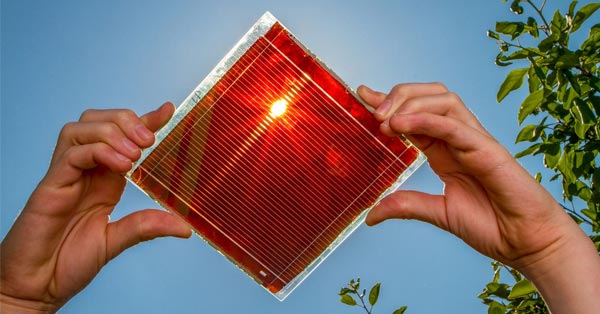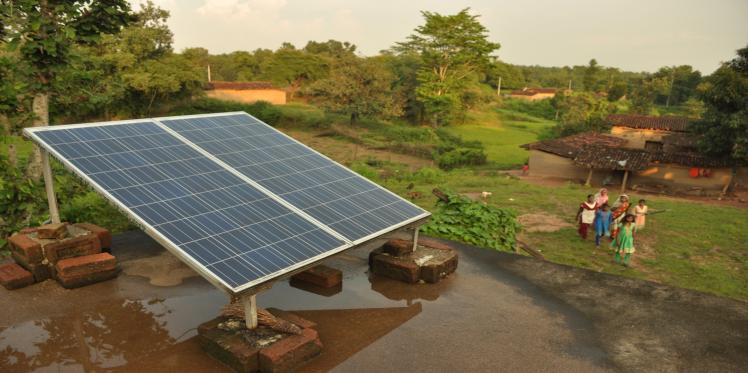Coal, iron ore, and copper are among the mineral resources that make Jharkhand famous. The state has been slow to capitalize on the green revolution. But the state is coming, and fast. At the centre of this change, perovskite solar cell technology is emerging. The perovskite solar cell is seen as the next big leap in solar power. It is lightweight, flexible and highly efficient. More importantly, a way for states like Jharkhand to leapfrog into the future of clean energy. Perovskite solar technology could become the catalyst for renewable energy in Jharkhand. That will not be powering just homes and industries but also environmental sustainability.
Understanding Perovskite Solar Cells

It shows the science behind the innovation. Perovskite solar cells (PSCs) are considered revolutionary recently. Perovskites are materials that have a unique crystal structure. They are composed of a hybrid organic-inorganic lead or tin halide compound.
These materials can absorb light across a broad spectrum. Converting it into electricity with high efficiency.
Why Are Perovskites a Big Deal?
Perovskite solar cells offer several advantages:
- In more than ten years, perovskite cells have already surpassed 25 percent. Resulting in Higher Efficiency Growth.
- Perovskite cells can be manufactured using solution-based processes. It requires lower energy and infrastructure. Resulting in low production cost.
- Flexibility is achieved when they can be printed on flexible substrates. Enabling integration into a wide range of surfaces.
However, they are not without challenges. Stability in high heat and humidity and the use of toxic materials remain critical issues.
India’s Perovskite Momentum
India has become a hub for solar innovation. Many top institutes and startups are working to commercialise this technology.
Key Developments Across the Country
- Tandem perovskite-silicon solar cells have been created by ART-PV India and IIT Bombay. They are providing efficiencies nearing 30 per cent. To manufacture these cells, they’re establishing a $10 million pilot facility.
- To reduce costs further, IIT Mandi is exploring additive manufacturing. And 3D printing of PSCs.
- To tackle the environmental concerns, NIT Silchar is using a lead-free perovskite alternative. They have achieved over 31 per cent efficiency.
These breakthroughs are not just scientific milestones. They represent a pathway to energy, cleaner air, and decentralised power.
Jharkhand’s Renewable Landscape
Despite its wealth in solar radiation. Jharkhand remains under-represented in India’s renewable energy map. As of 2024:
- The state’s renewable energy potential is estimated at over 66 GW, but it has installed only around 434 MW.
- A vast majority of its power still comes from coal-fired plants. Which leads to high emissions and poor air quality.
- The rural-urban energy divide remains significant. Hundreds of villages still depend on diesel generators.
The Jharkhand government unveiled an ambitious plan in 2022 after recognising these gaps. This includes rooftop solar projects, solar parks, agricultural solar pumps, and mini-grids.
But achieving this goal requires a technological jump. And this is where perovskite solar technology could change the game.
Perovskites in Jharkhand
Why Jharkhand Needs Perovskites
- Perovskite panels have light weight and flexibility. They are easy to install in remote villages. Which increases its rural reach.
- Affordable production could reduce upfront costs. Making solar viable for more households and farmers.
- Former coal zones and brownfields can be transformed into solar farms using PSCs. Which symbolises a clean change.
Potential Use Cases in Jharkhand

Perovskite solar technology could be integrated across Jharkhand’s landscape:
1. Solarising Rural Villages
PSCs could power microgrids, replacing diesel gensets. In areas like Gumla, Simdega, and Latehar. Their superior low-light performance would ensure power even during monsoon season.
2. Smart Rooftops in Ranchi & Jamshedpur
Municipal buildings and urban homes could use solar windows and solar facades. Enhancing aesthetics and energy output.
3. Agricultural Solar Pumps
PM-KUSUM is a scheme which ensures flexible PSC modules can power irrigation systems. That helps reduce diesel use and improve crop yields.
4. Solar Schools and Clinics
PSC-powered portable panels can electrify rural schools and health centres. With light, fans, and internet, service quality can drastically improve.
What Needs to Happen
For PSCs to take root in Jharkhand, several supporting factors must come together:
1. Manufacturing Support
Regions like Bokaro can have local fabrication units in their industrial zones. It is under the central government’s Production Linked Incentive scheme.
2. Policy Push
For perovskite-based projects, the Jharkhand Renewable Energy Development Agency can introduce incentives specifically.
3. Research Collaboration
Partnerships can lead to testing labs and local pilot projects. Between IIT Dhanbad, Ranchi University, and national innovators like IIT Bombay.
4. Skill Development
Vocational centres can train local youth in PSC module handling, installation, and maintenance. Green jobs and economic growth will be created.
5. Public-Private Models
Private firms can pilot PSC mini-grids in partnership with panchayats and NGOs. Especially in underserved areas.
Challenges Ahead and How to Solve Them
1. Durability
In humid climates perovskites degrade faster than silicon. As a solution, encapsulation technologies and hybrid designs are already extending. Their lifespan is more than 20 years.
2. Lead Toxicity
Indian researchers are advancing lead-free variants. While recycling methods now exist to reuse materials.
3. Market Trust
Jharkhand’s government can lead by using PSCs on public buildings. And also by sharing performance data transparently.
Looking Ahead
By 2030, Jharkhand will be known as one of India’s green energy pioneers and not just for coal, but
- Over 2,000 villages are solar-powered using perovskite mini-grids.
- Local factories produce PSC panels, employing hundreds.
- Smart buildings in Ranchi are powered by solar façades and windows.
- Farmers grow and irrigate sustainably with solar energy.
- Children in remote schools read under PSC-powered lights.
Conclusion
Jharkhand has its moment to shine. They stand at a turning point. As the world shifts from fossil fuels to renewables, the state has a chance not just to catch up but to lead. Perovskite solar technology offers an opportunity to bring affordable power to people. This opportunity is destined to transform lives. In states like Jharkhand, where the need and the potential are both very big and great. If policymakers, researchers, industries, and communities come together. Jharkhand can become a model of just energy transition in India. The sun is shining, and perovskites are ready to catch it.













